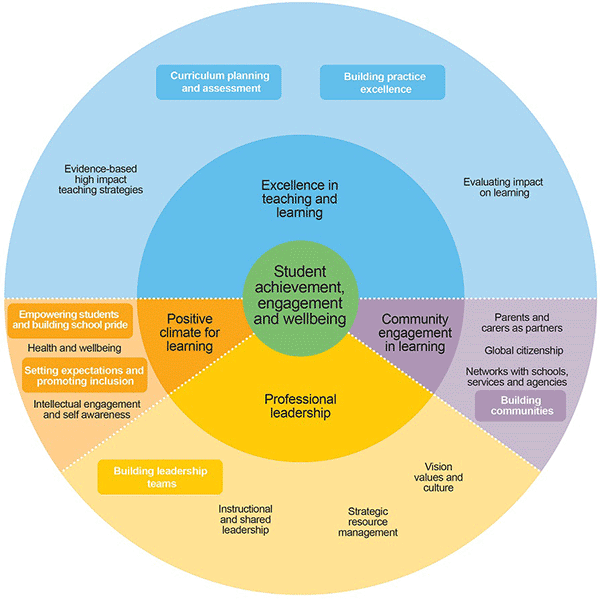Leadership in a whole school literacy and numeracy culture can result in literacy and numeracy being infused into all aspects of the school community – and how everyone thinks, talks, works and acts.
These activities can help school leaders move their school towards coherent whole school literacy and numeracy:
- Talking to students, school leaders, teachers, parents and caregivers
- Consider what has happened in the school for it to be 'where' it is now
- Visit a school with a whole school literacy and numeracy culture
"There is a major role for school leaders: to harness the expertise in their schools and to lead successful transformations." (John Hattie, 2015)
School leaders should reflect on the school leader's role in:
- leading excellence in teaching and learning
- cultivating collaborative cultures
- Getting better at getting better: how to lead a dynamic learning culture
See the
School Leader's Guide to Improving Literacy and Numeracy Outcomes for further information.
What a coherent whole school literacy and numeracy culture looks like
In a school with a coherent whole school literacy and/or numeracy improvement culture:
- Everyone in the school understands the importance of achieving high levels of literacy and numeracy for full participation and success at school and beyond
- There is a belief that all students can learn and grow into literate and numerate people
- Teachers are aware of what they need to do daily - both individually and collectively - to promote, embrace and support each student's literacy and numeracy development
- Principals and school leaders have taken the time to lay the foundations before jumping into the 'what'. Beliefs and values with associated actions have been established and shared, and these are used as a continuous reference for decision making (Fullan and Quinn, 2016)
- Literacy and numeracy are taught purposefully so students can participate in all disciplines.
- Students are able to make connections between learning areas
- Students are challenged intellectually and can connect their work at school to life beyond the school
- Teachers and school leaders overtly demonstrate an openness to learning and commit to continuous professional learning
►►►►►►►►►►►►Focus on Literacy
Teachers in all disciplines guide their students in the ways of thinking, specific vocabulary, conventions for communication and the specialised text structures that apply to the different disciplines (Ippolito, 2019)
Principals and school leaders should continuously describe, guide and deepen the work by:

Image: The FISO Improvement Model.
FISO link:
Dimension: building leadership teams
Literacy and numeracy leadership professional learning
The Bastow Institute offers a
comprehensive suite of evidence-informed professional learning that supports teachers, principals and regional leaders to implement, promote and influence exemplary literacy practice.
The Department of Education has developed a number of resources to support school leaders in improving student outcomes. Further resources can be found through:
References
Fullan, M & Quinn, J. (2016) Coherence making how leaders cultivate the pathway for school and system change with a shared process.
School Administrator.
Ippolito, J. & Fisher, D. (2019) Instructional leadership for disciplinary literacy. Educational Leadership. Vol. 76 No. 6. ASCD